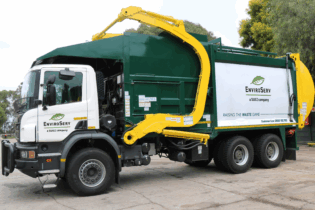Onderstepoort Biological Products SOC Ltd (OBP) have recently completed an energy management project that will not only save the facility 92,7MWh of annual energy costs but will contribute to a reduction of 81,6t of CO2 emissions annually to mitigate against global warming by reducing the carbon footprint of the institution.
The project’s feasibility, implementation and management was entrusted to consultants Royal HaskoningDHV (RHDHV) – formerly SSI – who after a comprehensive site energy audit of the OBP manufacturing facility determined energy saving opportunities on lighting, HVAC, motors, and water heaters (geysers). After submitting an energy audit report on the status quo and prioritizing recommended energy saving opportunities, a project implementation plan was submitted together with a budget, specifications and tender documents to appoint a contractor. Royal HaskoningDHV administered the contract during implementation stage and registered the project with the Eskom IDM. Sectional completions occurred in March 2012 for lighting and November 2012 for the heat pump installation. RHDHV’s project principal and deputy business unit director – energy, Moloko Sebone, explained some innovative features of the project. “All the lighting was retro-fitted with energy-saving T5 linear fluorescent lamps and LED technology and conventional electrical geysers in the small animal’s research facility were replaced with heat-pump technology” he said.“The initial audit identified a list of energy management saving opportunities on lighting retrofit, canteen equipment maintenance / fuel switch opportunities, lighting control, HVAC system control and optimisation, motors efficiency improvement, as well as hot water opportunity. For phase one of the budget plan, lighting and hot water opportunities were undertaken. The facility’s existing lighting system was retrofitted with type T5 energy saving lights and the 1600 litre electric calorifier (industrial geyser) was retrofitted with an air heat exchanger (heat pump). The heat pump uses 5kW electric input against the original’s 24kW electric element” continues Sebone.
Besides assisting OBP to claim a rebate from Eskom, RHDHV were able to add value to the OBP’s operation in that more of the Client’s operational staff and managers became aware of energy costs, efficient use of resources and general sustainability, and would in future be sensitive to these aspects. In the subsequent phases of the project the overall sustainability would be examined. The new lighting retrofit resulted in improved lighting in various areas of the facility. The T5 lamps have a longer burning life than the replaced fittings leading to lower operational costs. Financially OBP’s asset value (property plant and equipment) increased, which can be included in financial statements. The rebate realized through Eskom IDM programme amounted to R108 000, this was additional revenue to OBP. Working in occupied premises is always a challenge said Sebone but by preplanning and coordination with the various internal stakeholders smooth project implementation was achieved. Fluorescent fittings are characterised as hazardous waste in terms of National Environmental Management Waste Act (Act 59 of 2008), therefore Royal HaskoningDHV had to manage the controlled disposal of the redundant lamps to a classified hazardous waste disposal site through a Hazardous Waste Disposal service provider. The project will cushion OBP against the rising costs of electricity (projected to double in the year 2017 – from the 2012 costs) and has a further impact on general cost containment of doing business whilst assisting the business to remain competitive.






